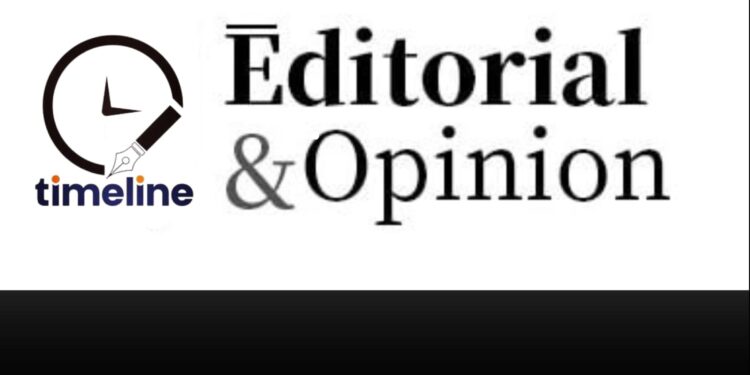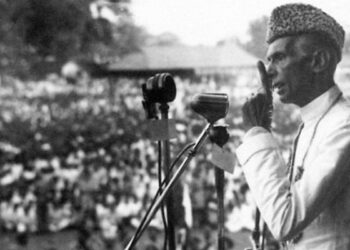Written by: Abdul Basit Alvi
National security is an essential pillar for any sovereign nation, safeguarding its citizens, institutions, resources, and sovereignty from both internal and external threats. It is a comprehensive concept that goes beyond military defense, encompassing economic stability, public health, environmental protection, and social cohesion. The framework of national security is designed to foster a stable and secure environment, where citizens can prosper and the political and economic systems remain robust in the face of challenges.
National security involves protecting and defending a nation’s interests, resources, and territorial integrity from a range of threats that could destabilize its sovereignty and well-being. These threats may include military aggression, terrorism, cyber-attacks, espionage, economic crises, environmental disasters, and internal unrest. The overarching goal of national security is to preserve peace and order while ensuring the safety and freedom of citizens from both external and internal harm. It is not limited to military defense but spans multiple sectors, each contributing to the overall security and prosperity of the nation.
Military security is often viewed as the cornerstone of national security, focusing on safeguarding borders from external threats, defending critical infrastructure, and responding to hostile actions from foreign states or non-state actors like terrorist groups. This includes developing military strategies, maintaining armed forces, and investing in technology, weapons, and intelligence capabilities.
Economic security plays a vital role in national security, as a nation’s economic stability—ensuring access to resources, maintaining supply chains, and protecting the national currency—forms the foundation of its citizens’ well-being. Economic security entails defending industries, markets, and businesses from sabotage or competition by hostile states, as well as addressing the impacts of economic warfare. A resilient economy can withstand challenges like inflation, recession, and trade disruptions while securing energy resources, vital minerals, and financial institutions from cyber threats.
With the increasing digitalization of the world, cybersecurity has become an integral part of national security. Cyber-attacks on government entities, private corporations, and critical infrastructure can have devastating effects, ranging from data breaches and financial theft to the disruption of essential systems like healthcare, transportation, and power grids. National cybersecurity strategies must include protocols, technologies, and governance frameworks to protect digital infrastructure, safeguard data privacy, and defend against malicious actors.
Social security encompasses the safety and well-being of the population, including measures to prevent civil unrest, control crime, and ensure access to healthcare, housing, and food. Public safety is critical, as health crises (e.g., pandemics) or social disturbances (e.g., protests) can quickly evolve into broader threats to national stability. Additionally, social security addresses issues of poverty, inequality, and human rights, with a nation’s ability to resolve these concerns being essential to maintaining internal peace and preventing unrest.
Environmental security focuses on the intersection of a nation’s natural resources, its environment, and its security. Problems like climate change, resource depletion, and environmental degradation can present serious risks to national stability, requiring comprehensive strategies to mitigate and manage these challenges. Natural disasters like droughts, floods, wildfires, and other catastrophic events can lead to mass displacement, disrupt agricultural output, and put immense pressure on national resources. To safeguard environmental security, nations must develop policies that focus on sustainability, disaster preparedness, and the equitable distribution of resources to prevent conflicts over essential commodities like water and food. Intelligence is crucial to national security, with agencies such as intelligence services, law enforcement, and military units responsible for collecting and analyzing information on potential threats to the nation’s safety. National security agencies gather intelligence through various methods, including human intelligence (HUMINT), signals intelligence (SIGINT), and satellite surveillance, using this information to guide decisions made by security officials. Counterintelligence, on the other hand, focuses on detecting and neutralizing foreign agents, spies, or terrorist organizations attempting to infiltrate a nation’s institutions or obtain sensitive data. It also works to protect national assets, resources, and plans from espionage and sabotage. Diplomatic security involves managing a nation’s foreign relations to bolster its security interests. This includes forming alliances, engaging in international organizations, and negotiating treaties and agreements. Diplomatic efforts also aim to prevent conflicts, ease tensions, and promote global peace and stability. By fostering relationships with other countries, a nation can form strategic partnerships that strengthen its national security, as seen in military alliances like NATO, which provide mutual defense in the event of an attack on any member state.
Homeland security focuses on protecting a nation’s citizens, institutions, and infrastructure from threats within its own borders. This encompasses counterterrorism, disaster response, border security, immigration control, and emergency management. Homeland security ensures that a country is ready to respond to emergencies, whether caused by natural disasters, terrorist attacks, or civil unrest.
National security today faces numerous challenges in our interconnected world. Terrorism remains a major concern, with extremist groups—both domestic and international—posing significant threats. Terrorist attacks can destabilize regions, disrupt economies, and compromise public safety. As cyber threats grow, nations must safeguard critical infrastructure from hacking, ransomware, and other malicious activities that could harm their economy or national defense. Heightened tensions between global superpowers or regional conflicts, including territorial disputes, trade wars, or military confrontations, can also have serious implications for national security. Furthermore, the environmental consequences of climate change, such as rising sea levels, extreme weather, and resource scarcity, contribute to geopolitical instability, economic challenges, and humanitarian crises. The COVID-19 pandemic underscored how a global health crisis could severely affect national security, with economic disruptions, loss of life, and social unrest.
National security policy is essential in addressing these complex threats. Governments must constantly evaluate potential risks and develop strategies to mitigate them. Effective national security strategies take a comprehensive approach, incorporating military, economic, and diplomatic actions, alongside collaboration with international organizations, civil society, and the private sector. To remain effective, national security policies must be dynamic, adapting to the ever-evolving global landscape and emerging threats, ensuring the protection of national interests and citizens. National security is not the responsibility of any one individual or institution; it requires the collective effort of all sectors of society.
Print media has been a crucial means of communication throughout history, playing a vital role in shaping societies, educating the public, and influencing political, cultural, and economic landscapes. From its origins with the invention of the printing press to the development of newspapers, magazines, and journals, print media has remained a powerful tool for spreading information. The history of print media dates back to the 15th century, following Johannes Gutenberg’s invention of the movable-type printing press around 1440. This innovation transformed the distribution of knowledge, making books, newspapers, and pamphlets more accessible to the public. Before print media, information was primarily transmitted through oral traditions or painstakingly hand-copied texts. The printing press enabled the mass production of texts, marking the start of the democratization of knowledge. Over the years, print media has evolved into various forms, including newspapers, magazines, journals, and newsletters, each serving distinct roles in society.
The emergence of newspapers in the 17th and 18th centuries, with their ability to report on current events and influence public opinion, solidified print media’s role as a cornerstone of modern societies. Newspapers, often published daily or weekly, offer updates on a wide range of topics, from politics and international affairs to entertainment and lifestyle. They are typically categorized into broadsheets, tabloids, and regional publications, each catering to different audiences. For many people, newspapers are a primary source of information, providing breaking news, investigative journalism, and comprehensive analysis.
Magazines, unlike newspapers, are usually published on a less frequent basis—weekly, monthly, or quarterly—and cover an array of topics like fashion, health, technology, business, and culture. They tend to focus on specialized topics, appealing to niche audiences with in-depth content, expert opinions, and feature stories. Journals, on the other hand, publish scholarly or academic articles and are a crucial resource for academics, researchers, and students. These publications delve into subjects such as science, medicine, law, and social issues, providing detailed research findings that contribute to the advancement of knowledge in various fields.
Though smaller in scope, pamphlets and brochures still serve an important role in disseminating targeted information. Often used in marketing, political campaigns, public awareness efforts, and education, they remain relevant in specific contexts.
Print media has historically played a significant role and continues to do so today, particularly in areas where digital media is less accessible or reliable. It remains one of the most dependable ways to reach large audiences. Through newspapers and magazines, print media serves as a key channel for spreading news, ideas, discoveries, and events across communities and countries. Newspapers, in particular, remain the go-to source for breaking news, investigative journalism, and expert commentary on urgent matters.
Print media has long been a powerful tool in shaping public opinion. Editorials, opinion columns, and feature articles can influence public attitudes and perceptions of various issues. Through these platforms, newspapers and magazines have the power to sway political views, raise awareness of social justice issues, and stimulate public discourse on critical national and global topics.
A key role of print media is its contribution to the democratic process. Serving as a watchdog, it holds governments and corporations accountable through investigative reporting, exposing corruption, injustice, and human rights violations. A free press is widely regarded as a cornerstone of democracy, providing citizens with the information they need to make informed decisions. Beyond news and entertainment, print media also serves an important educational function, further contributing to the public good. Numerous print publications, including journals, magazines, and educational pamphlets, play a vital role in enhancing public knowledge by providing educational content. Subjects like science, technology, health, history, and the arts are frequently explored in these formats, fostering a more informed and educated society. Print media also plays an essential part in documenting history and safeguarding cultural heritage. Books, journals, and magazines act as valuable repositories of knowledge, preserving the values, traditions, and stories of various communities. Publications have long been essential in documenting significant milestones, from political revolutions to scientific breakthroughs, helping future generations understand their history. Magazines and specialized journals, particularly in the fields of art, literature, and fashion, act as platforms for creative expression. Print media offers writers, photographers, and illustrators a space to showcase their work, enriching the cultural and artistic landscape. Whether through fiction, poetry, visual art, or fashion editorials, print media celebrates creativity.
Print media is crucial in delivering public health and safety information, especially during pandemics, health emergencies, or natural disasters. Clear and concise reporting on preventive measures, safety protocols, and available resources plays a vital role in safeguarding public well-being during times of national security threats. Additionally, print media is a powerful tool for shaping public perception and influencing societal attitudes. In moments of national security challenges, it plays a significant role in uniting citizens, fostering national resilience, and promoting social cohesion. Through editorials, opinion pieces, and feature articles, print media can guide public opinion in response to crises and national emergencies.
Print media also serves as a platform for promoting unity and solidarity during difficult times. For instance, during wars, conflicts, or terrorist attacks, newspapers often share stories and articles that encourage citizens to come together in support of national defense efforts. By highlighting the sacrifices of military personnel, first responders, and civilians, print media strengthens national identity and reinforces a collective sense of purpose.
National security threats often coincide with the spread of misinformation and propaganda, particularly in the digital age. Print media, with its long-established credibility, plays an essential role in countering false narratives, rumors, and disinformation. By providing accurate, well-researched reporting, newspapers help prevent confusion, division, and distrust that may arise during times of crisis. Editorials and opinion pieces in print media have the power to shape public opinion on national security matters, including defense spending, intelligence operations, counterterrorism strategies, and foreign relations. By offering insightful commentary, print media fosters informed discussions, challenges government actions, and contributes to policy-making that seeks to balance national security with democratic freedoms. Additionally, print media plays a crucial role in educating the public about the various threats that could compromise national security. Through detailed analysis, reports, and feature articles, it helps raise awareness of the nature of security risks and outlines the steps citizens can take to support the nation’s safety. Print media offers comprehensive articles that help the public grasp the complexities of national security threats, such as terrorism, cyberattacks, organized crime, and geopolitical tensions. By educating citizens, print media prepares them to identify potential risks and respond effectively. Through regular columns, special reports, and expert commentary, print media promotes national security awareness, helping citizens understand the challenges faced by security agencies and the strategies being implemented to protect the nation.
National security is not solely a domestic issue; it is also influenced by international relations and diplomacy. Print media, particularly through foreign correspondents and global news outlets, plays a vital role in reporting on worldwide events and fostering international collaboration in security matters. Newspapers often cover global security concerns like military conflicts, international terrorism, and peace agreements. By highlighting these events, print media helps citizens grasp the global dimensions of national security and how international developments impact their country’s safety and sovereignty. Additionally, print media serves as a platform for promoting diplomatic efforts and international accords that strengthen national security. Through coverage of peace negotiations, alliances, and collaborative security initiatives, print media keeps the public informed about global partnerships aimed at securing the nation.
Print media has been instrumental in shaping national security policies, educating the public, and holding governments accountable worldwide. During World War II, print media played a pivotal role in maintaining public morale, disseminating wartime propaganda, and ensuring national security through information distribution. The British government heavily relied on newspapers such as The Times, The Guardian, and The Daily Telegraph to communicate vital information to the public. These publications were crucial in spreading wartime propaganda, boosting morale on the home front, and keeping citizens updated on the progress of the war. A key example of print media’s impact on national security was how newspapers reported on the successes and challenges of the British military, particularly the Battle of Britain. The press continuously highlighted the importance of civilian resilience and national unity in facing German aggression. Furthermore, while adhering to government censorship during the war, print media outlets provided citizens with accurate updates on air raids, rationing, and other wartime efforts. This collaboration between the press and the government helped maintain stability and national security during one of the most challenging periods in modern history.
During the Cold War, UK print media played a significant role in exposing espionage and security breaches involving Soviet agents. For instance, The Sunday Times and The Daily Mail published investigative reports that uncovered spy networks operating within British intelligence agencies. These reports played a key role in uncovering espionage operations, protecting national security by removing Soviet influence from critical government positions.
In the context of Pakistan, the country’s national security has been shaped by a combination of external and internal factors, such as geopolitical tensions, terrorism, economic stability, and political dynamics. In this intricate landscape, the media—especially print media—has been vital in shaping public opinion, sharing information, and holding the government accountable. Pakistan’s print media has played a vital role in national security by delivering timely and accurate reports on security issues, shaping public opinion, and fostering discussions on important national matters. One of the primary roles of print media in Pakistan has been to inform the public about the country’s security situation. From domestic terrorism to external threats, print media outlets have offered essential coverage, helping the public grasp the nature of these challenges and how the government is responding.
Pakistan has encountered significant internal security challenges, especially in the form of terrorism and militancy, which have had a profound impact on the country’s stability. Print media has been crucial in reporting on terrorist attacks, bombings, and insurgent activities that have directly threatened national security. For instance, the media’s extensive coverage of events like the 2007 Lal Masjid operation, the 2014 Peshawar school attack, and the rise of groups such as Tehrik-i-Taliban Pakistan (TTP) has kept the public informed about the escalating threat posed by these extremist organizations. Newspapers also provide expert analysis and opinions on the strategies employed by security forces to combat terrorism, reporting on both successes and setbacks in counterterrorism operations. This helps the public understand the complexities of national security efforts and builds awareness about ongoing actions to combat extremism.
Print media in Pakistan has also served as a vital platform for communicating government policies designed to enhance national security. Whether it’s the military’s Operation Zarb-e-Azb in 2014 or the National Action Plan (NAP) introduced after the 2014 Peshawar school attack, newspapers have played a key role in conveying the objectives and progress of these operations. Coverage of such security policies allows for discussions on their effectiveness and any potential shortcomings. The media has consistently highlighted border security issues, particularly with India and Afghanistan, while also covering diplomatic efforts aimed at promoting peace and stability. This helps the public understand the significance of these policies and the ongoing strategic concerns in Pakistan’s national security framework.
During national security crises, print media plays a critical role in shaping public opinion and fostering unity. In a diverse nation like Pakistan, where political divisions and ethnic tensions often exist, print media can act as a unifying force during national emergencies. During crises, such as the Kargil conflict in 1999 or ongoing tensions with India, Pakistan’s print media has often garnered public support for the government and military. Newspapers publish editorials and op-eds that urge national unity and emphasize the importance of supporting the armed forces in the face of external threats. This helps to uplift morale and strengthen patriotism during challenging times. Similarly, during terrorist attacks or natural disasters, print media frequently highlights stories of heroism, sacrifice, and resilience, showcasing the strength of the Pakistani people. Such reporting fosters solidarity and national pride, encouraging citizens to come together in support of national security efforts. In times of conflict or instability, the spread of misinformation can cause confusion and panic, making the role of print media even more crucial in ensuring accurate information reaches the public. Pakistan’s print media holds a crucial responsibility in combating misinformation and ensuring that the public is exposed to accurate, fact-based information. This is especially vital when addressing national security matters, as false narratives can incite unrest, provoke violence, or erode public trust in the government’s security initiatives. For example, print media outlets have frequently taken the lead in confronting extremist ideologies, offering factual reports on terrorist organizations, their strategies, and the government’s efforts to counter them. These efforts play a vital role in mitigating the influence of extremist propaganda and reinforcing the public’s resolve against militancy. Pakistan’s print media provides an important platform for debate and discussion on critical national security matters. Newspapers and magazines offer space for expert viewpoints, political commentary, and in-depth analysis on security issues, ranging from counterterrorism strategies to military spending and regional security dynamics. Print outlets often conduct detailed discussions on Pakistan’s military capabilities, defense spending, and the direction of national defense policies. By publishing interviews with defense analysts, former military officers, and government representatives, print media fosters an informed public dialogue on securing the nation amidst an ever-changing geopolitical landscape.
A recurring theme in Pakistan’s national security dialogue is the relationship between the civilian government and the military. Print media plays a crucial role in facilitating open conversations about this delicate power balance. Through editorials, columns, and interviews, newspapers examine the military’s influence and its role in shaping security policy. Such reporting helps maintain a careful equilibrium between civilian and military institutions, contributing to national stability and security.
In the rapidly evolving landscape of modern communication, the rise of social media has transformed how information is shared and consumed. Platforms like Facebook, X, Instagram, and WhatsApp have made instant global connections possible. While this democratization of information has its advantages, it also brings challenges, particularly regarding the accuracy, reliability, and accountability of shared content. In contrast, print media—newspapers, magazines, and journals—has traditionally been regarded as a more responsible and serious source for information. Despite the decline in print readership and the rise of digital platforms, print media maintains its unique position in offering structured, fact-checked, and credible content.
Pakistani print media has shown a greater sense of responsibility in addressing national security issues compared to social media platforms, which often contribute to the spread of misinformation, propaganda, and hate. Traditional newspapers, with editorial oversight, adhere to ethical standards and guidelines, allowing them to provide more reliable, well-researched content, especially when covering sensitive national security matters. On the other hand, social media lacks sufficient regulation and moderation, making it a breeding ground for unverified rumors, divisive rhetoric, and false narratives that can threaten national unity and security. While both media forms shape public opinion, print media’s commitment to journalistic integrity has made it a more trustworthy source during crises and security challenges.
The recent amendments to the Peca bill will also help regulate social media, as many of the complaints about fake news stem from these platforms. The role of print media in national security has been invaluable, and it is expected to take further measures to address issues like fake news, misinformation, and false propaganda. Strengthening national security is a collective responsibility, and it is crucial for all segments of society to play an active role in this effort.
























